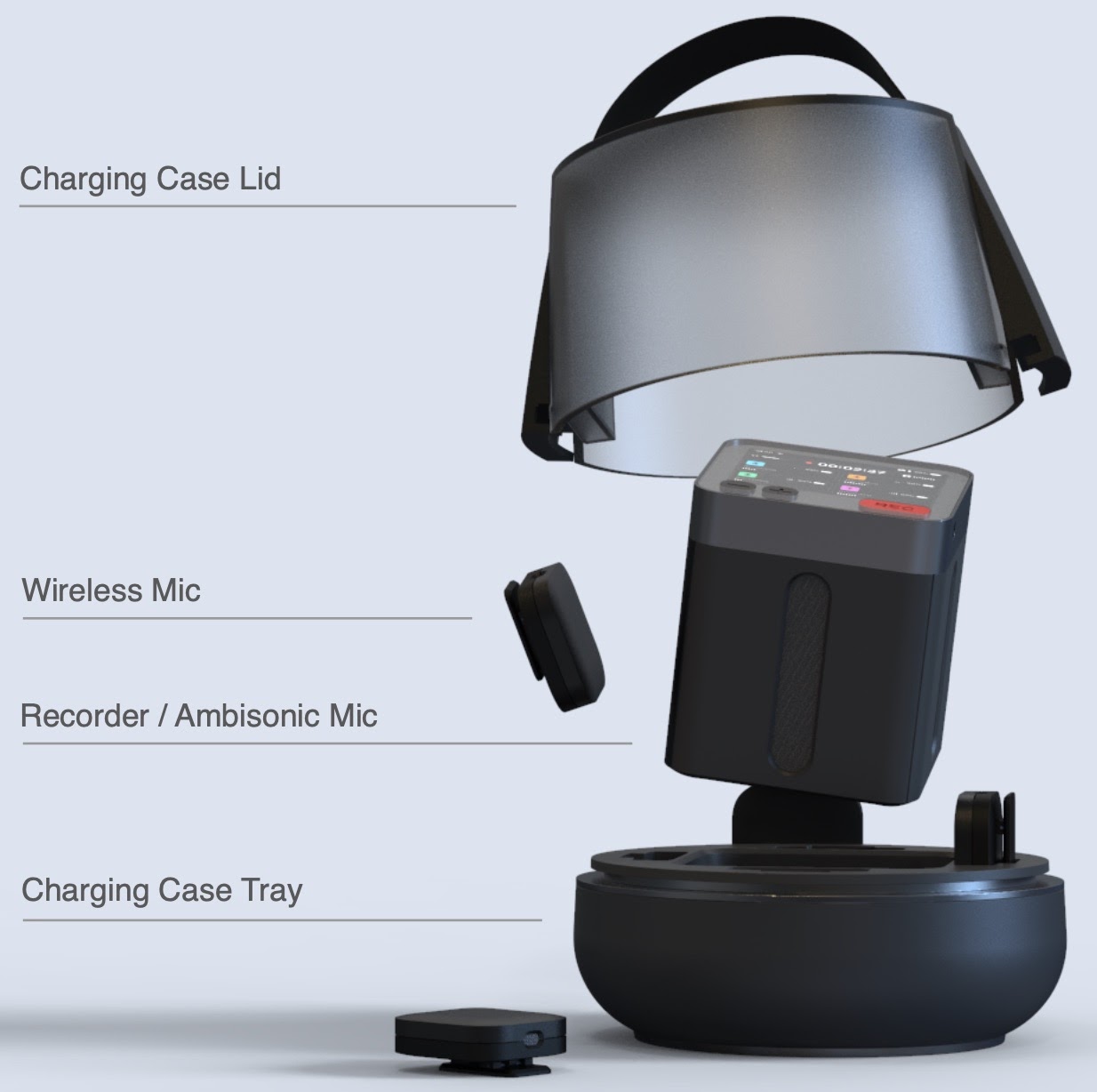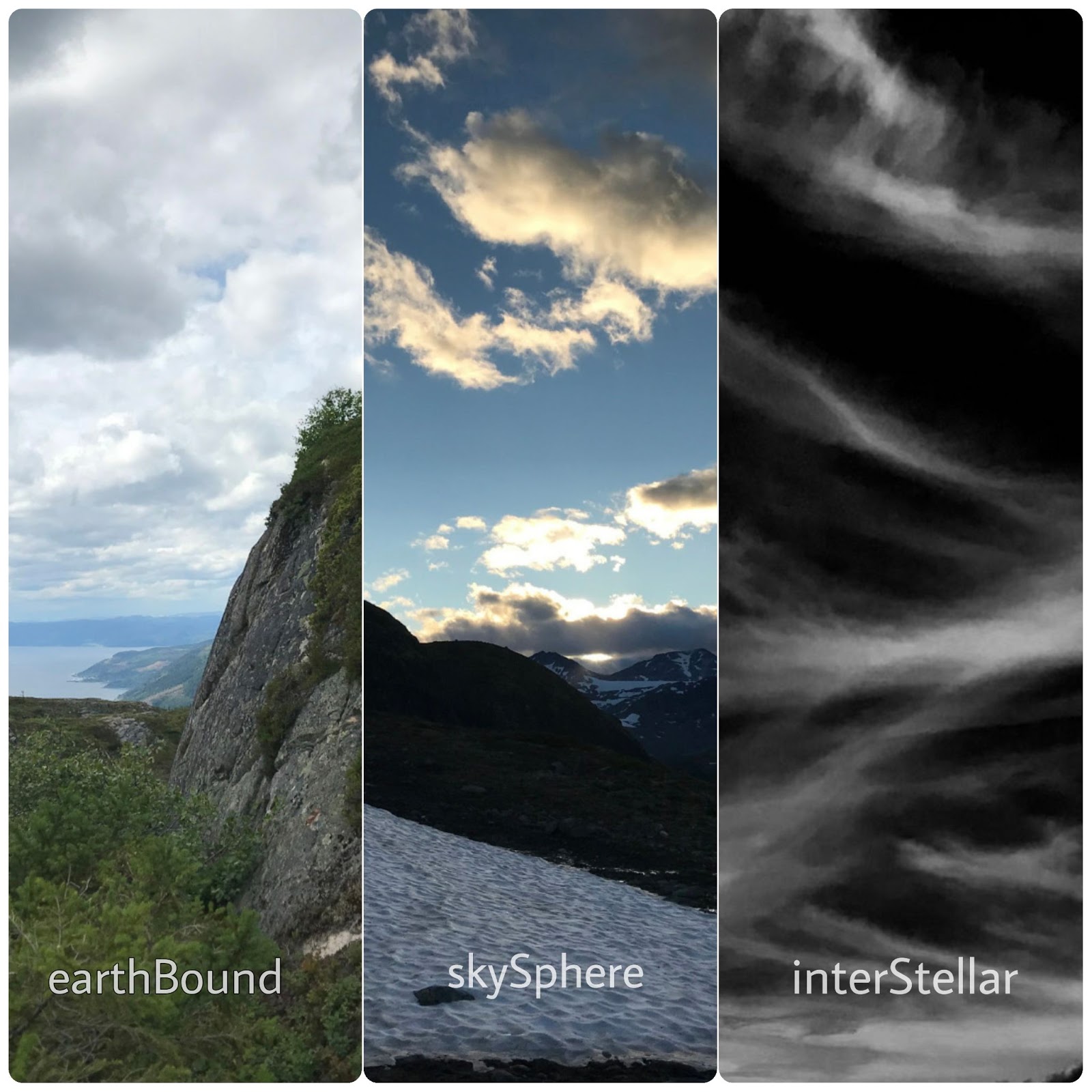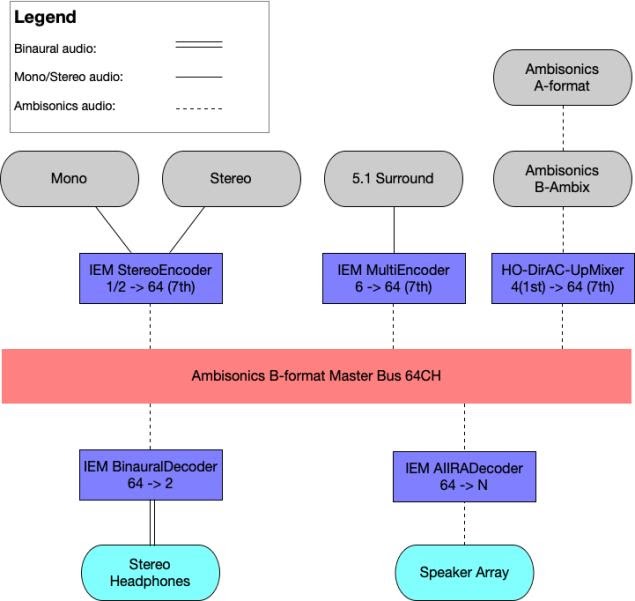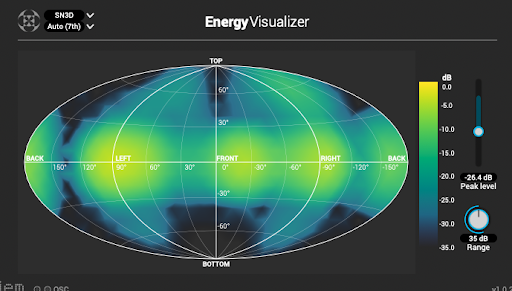HEARING NOMONO: Our Journey into Audio Branding and Feedback Sounds
Regardless of whether you’re reading this blog post on a phone, tablet, or computer, your device is capable of producing audio feedback sounds. And if you’ve watched any advertisement or media today, then you’ve undoubtedly heard a sound logo. Almost all human interaction with modern technology is predicated on responses to audible prompts and memorable branding, so the development of these sonic materials is an important part of any design process. We worked with NOMONO, a young Trondheim-based company, on the development of audio branding and audio feedback materials for their first hardware and software products.
A Bit About NOMONO
Founded in Trondheim in 2019, NOMONO’s mission is the development of innovative audio solutions for podcasters and storytellers in a variety of audio mediums. Currently the company is deep in the development stage for its initial hardware and software offerings (although if you’re reading this then it’s likely that the products have been released and our NDA has been lifted!). These products are designed for the recording and processing of ambisonic audio via a standalone ambisonic hardware platform (four lavalier microphones and a central ambisonic microphone all housed in a sturdy charging container) and an accompanying app and cloud storage platform for the management and processing of the audio created via the hardware platform.

At the time we entered the project, NOMONO was still settling on the final aesthetic character of their hardware and software, so our simultaneous development of its audio feedback aesthetics and the sound logo that would define NOMONO’s initial audio branding required ongoing discussion.
Our Solutions & Deliverables
Although our initial plan was to design audio feedback sounds for mapping to specific user actions and processes, the NOMONO timeline grew delayed to the point where this wasn’t feasible. Thankfully, the discussions regarding NOMONO’s aesthetics and culture led us to a generalised approach that was feasible given the development limitations while allowing us to capture NOMONO’s aesthetic in our sonic materials. Our solution was to develop three sound libraries, each consisting of a set of 12 feedback sounds (four positive, four negative, and four processing). These libraries, earthBound, skySphere, and interStellar, depict the gradient between the Earth and outer space. They were inspired by the NOMONO team’s emphasis on merging dichotomies such as old and new, simple and complex, and intuitive yet innovative. From the documentation we provided to NOMONO:

“The earthBound, skySphere, and interStellar libraries, whether deployed as complete units for selection by users or in smaller subsets as the NOMONO team finalises its vision, offer a diverse array of options for eventual mapping. The general functional families of Positive, Negative, and Processing ensure the inclusion of sounds that will map to any function or action.”
Sound Logo(s): Terrestrial -> Celestial

Having developed the interpretation of NOMONO’s aesthetic/design/cultural character, we then designed iterations of the sound logo to match each of the sound libraries, giving NOMONO flexibility in future use of the materials. As can be seen above, the melodic motif that grounds each sound logo iteration is simply shaped and harmonically simple. Lacking harmonic information regarding its major or minor modality, the motif can be deployed in many different settings to achieve different effects.
The earthBound logo employs tactile, natural sounds and acoustic instruments (or midi depictions of acoustic instruments) alongside textural materials drawn from field recordings and Earth sounds that imply place within Norway and the Nordic region (ex. skis, trains, Icelandic volcanoes, etc.)
Our skySphere logo expands the musical materials vertically through arpeggiation, increased reverberation, and synthesised instruments alongside the still-present orchestral timbres. The field recordings begin to emphasise the atmospheric gradient and increased scale, including terrestrial sounds but increasingly focusing on the aerial and flowing. (ex. birds, whales, Arctic Ocean, rivers, etc.)
interStellar leaves tangible natural sounds behind. The melody is set in an effects-laden texture and surrounded by a harmonisation that includes pitch materials of increasing dissonance. An underlying pedal tone twists downward against the architecture of the melody, adding an additional layer of unraveling physical space. Non-musical textures include airplane engines and the sound of black holes (acquired by NASA. We’re good, but we’re not that good!).
Audio Feedback Sounds
Our development of the sound logos was guided by two main considerations: first, they should fit in the aesthetic of our three soundscapes and second, they should not be harsh and overwhelming. They should not create annoyance since these sounds will be heard numerous times by the user while operating the machine.
earthBound: This library accentuates the idea of earthiness by employing a tangible and tactile approach towards developing the sounds. The feedback sounds in this library are percussive at the core, are inspired by physical things in nature, and therefore are more natural sounding (even tending occasionally toward skeuomorphism). These sounds are mostly dry (meaning they don’t have any time-based audio effects like reverb, delay or echo) and they typically lie in the most sensitive hearing range of a human ear, which is from 500Hz - 4000Hz.
skySphere: This library is a bridge between earthBound and interStellar, with natural-sounding, tangible elements. The sonic elements are more spaced out, reverberant, and warm, evoking the atmosphere. The sounds are a mix of percussive elements with a short attack and pads with a longer attack and release. These sounds tend are wetter (effects such as reverb, echo, and delay).
interStellar: The interStellar library was designed to bring the user/listener to an intangible realm where he/she subconsciously feels the futuristic and novel characteristics of the products and processes NOMONO’s new platform allows. This was achieved by crafting expressive ambient and ‘spacey’ materials using ROLI’s ‘Seaboard’ and its sound engine ‘Equator’. Compositionally, these sounds have an inner melodic structure somewhat reminiscent of the sound logo. A subset of the sounds in the processing category have a distinct pitch bending element, adding a new texture to the feedback sound palette to which the user has grown accustomed. These sounds also contain arpeggiated textures, and, at their cores, they contain enough character to serve as contextual cues to the listener.
Explaining Ambisonics
Ambisonics is a full-sphere surround sound format that enables users to experience an immersive audio sensation through various monitoring devices. Because Ambisonics is one of the most important features of NOMONO products and a key element of the company’s intended future direction, we used Ambisonics technology to produce the sound logo.
For the mixing session, we rendered the Mono, Stereo and 5.1 surround tracks into 64 tracks of 7th order Ambisonics via IEM Encoder, combined with 1st order ambisonics ambient tracks from Trondheim field recording.

In discussions with NOMONO, they emphasised that the ambisonics should not be about sound flying everywhere, but about making all sound elements more clear. That was also the principle behind our production. Instead of overly automating excessive panning, we used the features of Ambisonics to shape an immersive, highly characteristic sound space. We assigned the low frequency part of the ambient sound to the bottom of the Ambisonics sound field, while distributing the mid and high frequency sound effects higher in the spherical space. In contrast, all melodic instruments are arranged horizontally, or at a smaller elevation angle, at the front of the audience.

Since most NOMONO users will connect their products via headphones, we rendered the sound logos to two versions: Ambisonics Binaural and 7th order Ambisonics. Ambisonics Binaural can be played through headphones directly, while the high order Ambisonics can be used in exhibitions, product launches, and other events where multiple speakers can be set up. Compared with the binaural version, 7th order ambisonics provide a more complete Ambisonics immersive experience. This setting also gives NOMONO more options when implementing these materials in the future.
Ambisonics Field Recordings for Testing and Inclusion in Sound Logo(s)
One of the products which NOMONO is working on is a web-based software that performs signal processing, noise reduction, and sibilance detection algorithms in a dialogue-based setting on ambisonic recordings. To test out their software, the MCT team were tasked with the additional deliverable of ambisonic field/test recordings.

As you can see in the above images, we used an ambisonic microphone, the Zoom H3-VR, to record sounds from all over Trondheim to use in the sound logos. We recorded ski and river sounds in Bymarka. Sea water, seagulls and train sounds by the fjord. Church bells and conversations at Nidarosdomen. We also recorded conversations in a large tunnel with an enormous natural reverb as seen in the bottom right image. Abhishek and Lindsay recorded group conversations at Bumerang, an organisation that lends sports equipment, and Resykkell, a bicycle workshop. They also recorded multilingual conversations which included Hindi, Malwi Kannada, Odia, Bengali, and Persian, as well as differently accented English, among their friends. These sounds were delivered in raw format without processing to NOMONO, who will use them for testing and improving their noise-cancellation technologies.
Conclusion
To reiterate, we produced a whole lot of useful audio this semester. Our deliverables included three sound logo iterations (versions in both binaural and 7th order ambisonics), 36 audio feedback sounds (12 for each sound library), and ambisonic field recordings in at least five different languages and many different accents. Hopefully these materials will prove useful to NOMONO, and sometime soon we’ll be reading about NOMONO’s new products as the next big thing in audio.
(We also want to extend a large “THANK YOU!” to Sigurd Saue, Brad Swanson, Viktor Rydal, and the rest of the NOMONO team for the great experience and all their help this semester. It has been a great experience.)
